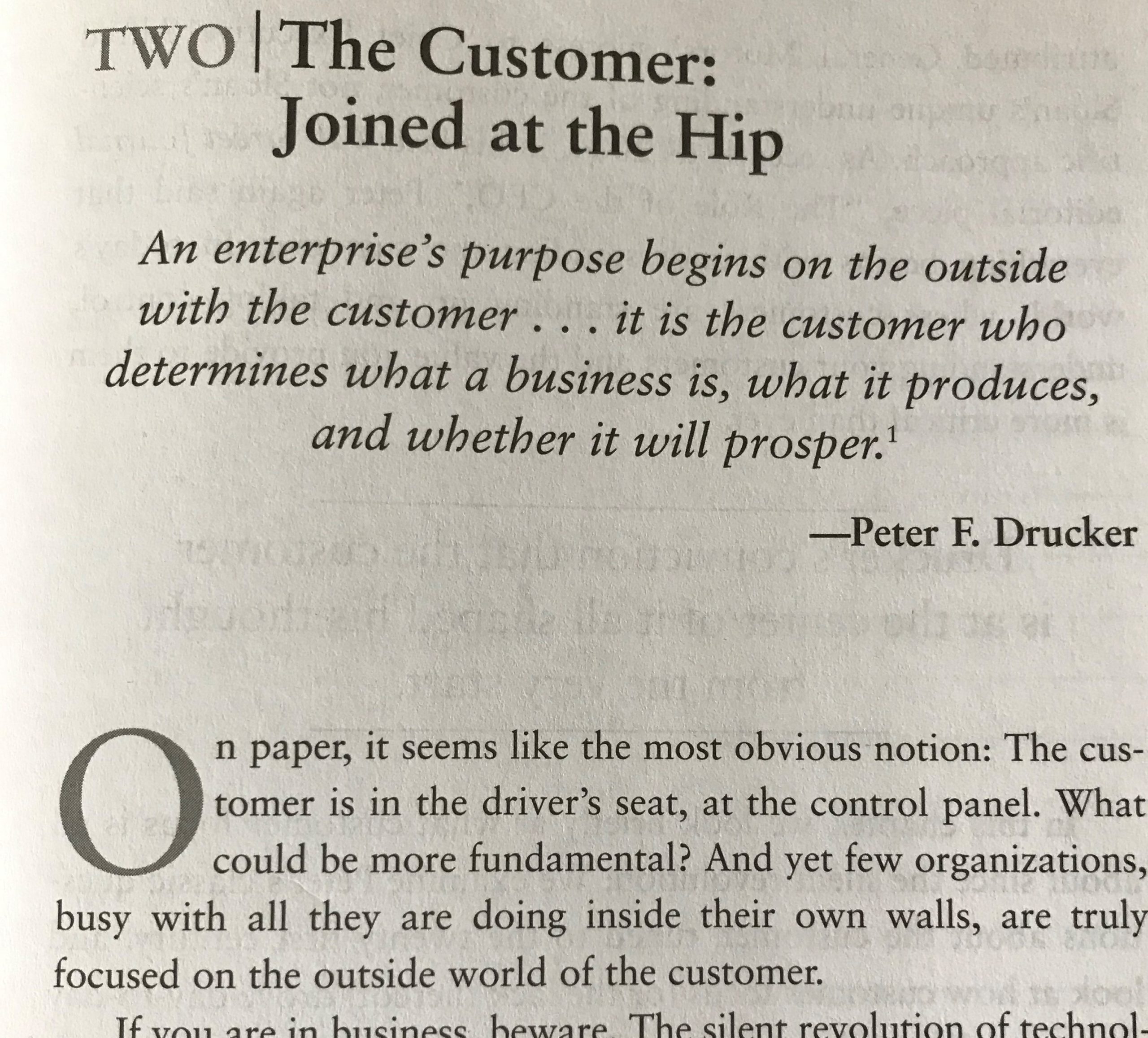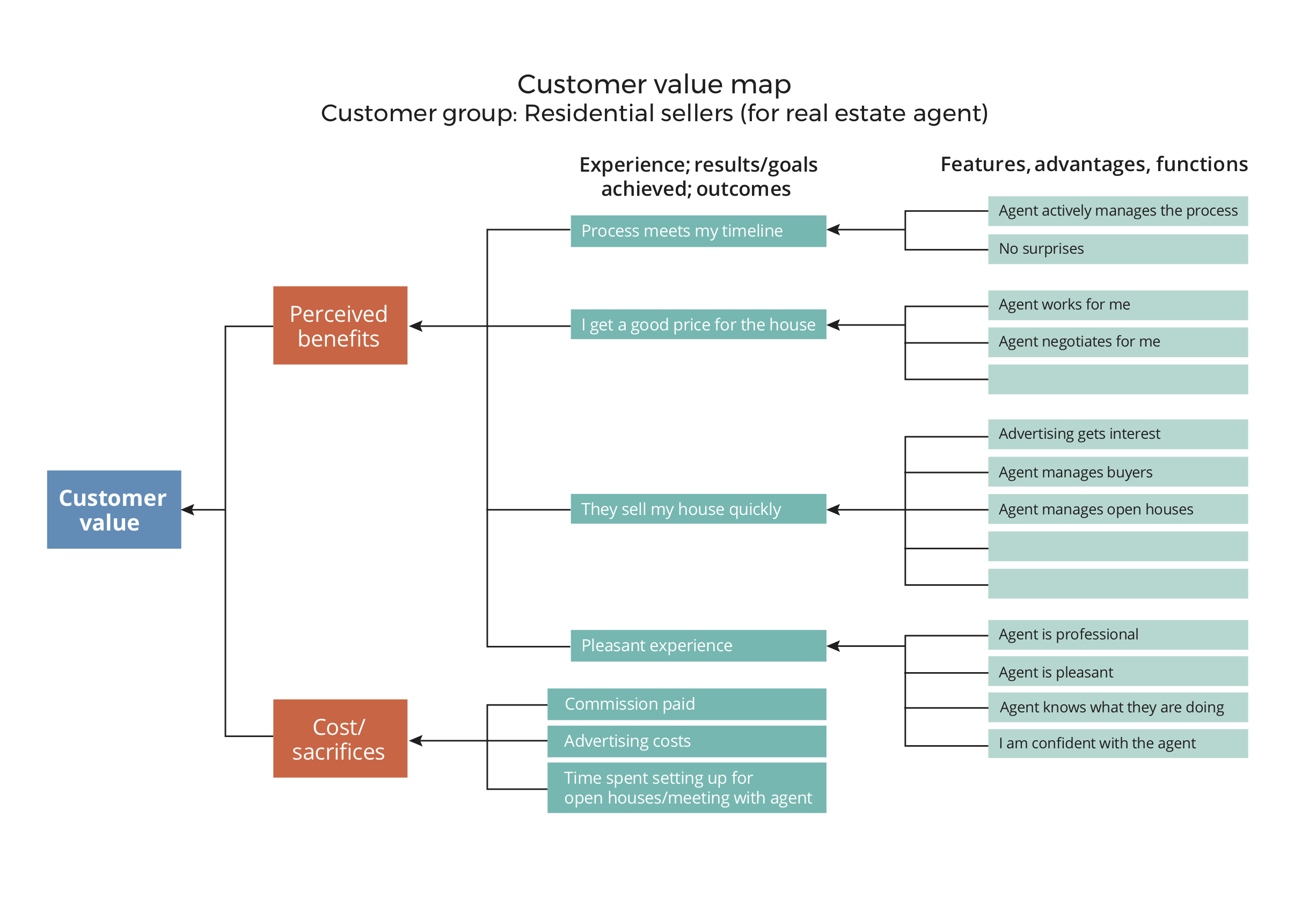Peter Drucker was one of the greatest management and leadership scholars ever. He studied business, managers, leaders and how this intersected with society. As a consultant and an academic he wrote 39 books and probably founded modern management.
His perspective on ‘the customer’ provides us with key insights today that allow us to build sustainable businesses and organisations. His views on ‘the customer’ have been verified by more contemporary research, by Harvard and Forrester.
It’s now time more than ever to heed his sage advice.
About Peter Drucker
Peter Drucker is regarded as one of the greatest management thinkers, consultant, academic and author of all time. A big claim. Consider these comments:
- Harvard Business Review: “…the mention of Peter Drucker commonly guarantees attention. People listen because they respect the authority of experience—distilled, analyzed, articulate.”
- Forbes refer to him as the “founder of modern management”.
- Business.com: “Peter Drucker was a world-famous management consultant whose visionary management theories form the bedrock on which corporate America was built.”
- “His teachings form a blueprint for every thinking leader”, John A. Byrne (Former Editor at Business Week, in Edersheim (2017) page x.)
Whilst Peter Drucker’s focus was on management, leadership and the intersect between organisations and society, the cornerstone of his ideas for business was always on the customer.
“It is the customer who determines what a business is. It is the customer alone whose willingness to pay for a good or for services converts economic resource into wealth…what the business thinks it produces is not of first importance.
What the customer thinks he or she is buying, what he or she considers value is decisive – it determines what a business is, what it produces and whether it will prosper.” (Drucker 1973)
Let’s just unpack this a little.
- What the business thinks it is doing is really of little value, because it is what customers determine as value, as important.
- If the business sticks to what it wants to do, with no regard for the customer, then it will not prosper.
- It is the customer who makes the decisions – their willingness to pay for something is the only source of economic wealth for the business.
- We often see businesses selling something – but what the customer buys is something completely different. Common with product centric businesses, they sell a product – but the customer buys what they can achieve with the product. Value defined on different parameters.
Drucker here is giving us the definition of a customer centric organisation. It is one that recognises that the customer’s perception of the value they deliver is paramount to long term success and prosperity.
Product centric businesses on the other hand promote their products with features and price discounts. With seemingly no consideration for the customer’s perception of value. Product centric businesses like this are dependent on cash-flow, not long-term value creation.
The Organisation and the Customer: Joined at the Hip
“An enterprise’s purpose begins on the outside with the customer…” (Drucker 1986)
“Drucker’s conviction that the customer is at the center of it all shaped his thought from the very start… In Peter’s first book, he attributed General Motors’ success to Chief Executive Alfred Sloan’s unique understanding of the customer, not Sloan’s scientific approach.” (Edersheim 2017:43-44)
The purpose the organisation exists is to add value for customers. If there is no value add, then the organisation will cease to exist.
Knowing the customer and the two-way value exchange is critical to long term success.
Taking this outside-in perspective was rediscovered and reinforced decades later by Harvard Professor Ranjay Gulati in 2009 when he released Reorganize for Resilience. Whose research demonstrated that customer-centric (outside-in) businesses were significantly more resilient their product-centric, inside-out counterparts.
In fact, customer-centric businesses not only significantly outperformed product-centric companies, they also bounced back from recessions much more quickly.
“Building outside-in oriented organisations is about both insight and action. Action requires overcoming internal organisational barriers. Moving from the what of customer empathy to the how of organisational integration… Outside-in thinking does not mean blindly following what customers tell a company to do… This goal isn’t merely to serve customers. The goal is to immerse yourself in customer problems so you can offer up unique solutions.” (Gulati, 2009:17)
14 years of Forrester Research also rediscovered this same principle. They published their findings and recommendations in the book, Outside-In: The Power of Putting your Customer at the Centre of your Business, in 2012.
“Connecting to the customer – being joined at the hip – is the beginning of defining your tomorrow.” (Edersheim 2017:48)

The Four Drucker Questions
When Drucker worked with organisations, he had four key questions – probably themes of questions – that he used consistently through 70 years of work! It tested what the organisation knew, what it’s focus was and what decisions were important. These questions are drawn from Edersheim 2017.
Q1: Who is your customer?
Seems a simple question, right? However, most organisations do not know this to level of detail they need.
The sub-questions about who the customer is involves.
- Who is the end consumer?
- Who is (or are) the decision-makers?
- Who are the buyers?
- Who are the critical influencers and sources of information for these customers?
Once you know who they are, then we have to consider:
- ‘Who in this interlocking world of alliances and partnerships should you view as customers versus competitors?’
And:
- Who is not your customer?
- Which current non-customers should you be doing business with?
Every organisation needs to answer these questions to ensure you have the optimal business design. Vague responses equal wasted resources in the organisation, and lower value delivery.
Saying, “Everyone is my customer” and “the customer is at the heart of all we do”, is not good enough. We need to know who they are in detail and how they interact with others.
Within Profit by Design, developing your Customer Strategy is the starting point for developing a customer portfolio full of profitable promoters. We start with identifying the various customer groups and understanding any value exchange between those customer groups. Then for each customer group we will define an intent.
Q2: What does your customer consider value?
This has to get beyond just asking the customer, but also monitoring their behaviours and measuring where their preferences lie.
Drucker’s approach here was to ensure that there became an alignment between the company perceived as the value they delivered and what the customer actually values. As well as, identifying customer value that remained unsatisfied.
Again, in Profit by Design we use Value Maps to unpack the complexity of the perceptions of value for customers. Once formulated these Value Maps become measurable. And through a process of monitoring customer behaviour as well as listening to them, we can test the relationships between the elements of value, to find the few that are of most value to customers.

After the long discussions and answering these first two questions areas, Drucker would then move on to the last two question areas.
Q3: What are your results with customer?
Notice the focus here on results. This is looking at the outcomes we achieve with customers, which then leads on to value for the company.
“By the late 1980’s Peter felt that many companies were so focused on shareholders that they had lost sight of the customer. …profits follow customer satisfaction, not the other way around. The purpose of a business is to provide value to the customer. …the profits that flow from this value reflect the company’s effectiveness in aggregate…” (Edersheim 2017:64-65)
(See also: Focus on Results)
The sub-questions about your results with customers involve:
- How are you measuring your outside results?
Drucker was very keen on an evidence-based approach to management.
Consider these two articles on measuring results. Measuring Outcomes in Government, The Eight Steps to a High Performing Organisation.
- How are outsiders measuring and sharing results about your products and services?
Advocacy has always been important. Today, more so than ever. Have a look at NPS.
- Are you fully leveraging the information your results provide?
Examine the gaps between your desired results, the targets you have added to your performance measures. What causes the gap? What opportunities are there for performance improvement, to reduce the gap between your current and desired state?
- Are you honest and socially responsible in presenting your results?
Ethics? Yes, absolutely. When we are customer centric, we exist for customers. We care about what they think and feel about what we are doing. See leadership perspective.
“The outside-in perspective: An organisation’s point of reference should always be what is going on in the (customer’s) marketplace, not the company’s boardroom.” (Edersheim 2017:68)
Q4: Does your customer strategy and your business strategy work together?
Some organisations I’ve seen have their business strategy, sometimes just a list of ‘pet projects’ that they expect will take them to the next level of performance. One of these initiatives is often the Customer Experience, program of work.
However, the Customer Experience program needs a customer strategy to guide it. And this is where the problem starts for many organisations today. Their customer strategy and business strategy are not aligned or linked. Today “business strategy” has lost so much meaning. It is often some lofty, vague statements followed by a list of projects or actions.
The business needs to articulate the outcomes or results, the measurable impact it desires to make on the lives of the customers or community they serve. Then the business needs to work out how to make progress towards those results. This is the business strategy. The customer strategy then supports the realisation of those results.
This is how the customer strategy and the business strategy work together.
“…an outside-in perspective is based on the business’s systematic capability to gather external information that truly listens to the customer, and to devise and implement customer-tailored strategies in response to customer needs.” (Edersheim 2017:69)
Drucker’s four sub-questions here.
- What is the level of integration with customers and your scope of offering?
Are you truly listening to understand your customers? Do you understand what they value and what they value is worth to them? What does it take to turn your customer into an advocate of what you do?
Do you have a voice of the customer program? Does it answer these questions? Or is it an interesting research program that often leaves you with more questions than answers?
- How are outsiders measuring and sharing results about your products and services?
What are observers and influencers saying about your products and services? Are they aligned with what your customer are saying – why, why not?
- How do these relationships all fit together in a portfolio that fits with the business strategy?
Map out how the causal and effect relationships of the results that will create alignment between your customer strategy and business outcomes.
If you have a portfolio of projects and programs, ensure that the results of each of these initiatives align to business outcomes. These results/outcomes are measurable, they are not performance measures or targets.
We use performance measures to give us feedback on the results, and targets to signal priority areas. More here and here.
- Are you allocating resources where you want to be investing in relationships?
Quite simply, are you investing effort – skills, resources, people – on the areas of your organisation that need the most attention and will deliver the greatest impact?
Call to action
Consider this:
- Possibly the greatest consultant/academic on leadership and management in modern history believed that the “outside-in” (or customer centric) approach was a “wealth producing strategy”. Delivering long-term socially responsible value for the customer, business and shareholders.
- Harvard Professor Ranjay Gulati’s research conclusively demonstrated that organisations with an outside-in perspective outperformed all other business types. In the long term and particularly during recessions.
- Forrester Research of 15 years proved exactly the same outcomes. Outside-in leadership and management teams create long-term sustainable organisations that deliver value for customers, communities and shareholders.
What approach do you use?
Are you viewing the world, outside-in, or inside out?
What is the practice within your organisation?
Do you have a meaningful customer strategy?
Do you have the right tools to do the job?
The book, Profit by Design: how to build a customer portfolio full of profitable promoters. It is a how to guide for managers. It starts with developing your customer strategy. You can learn more about the book here, with a free download of a sample of the book, and the 17 templates.
References:
Alderton, Matt; Learn about Peter Drucker’s management theory and how it can help your business
Edersheim, Elizabeth Hass, (2017) The Definitive Drucker, McGraw Hill New York
Denning, Steve (2014, July 29) The Best Of Peter Drucker
Drucker, Peter (1973) Management, Harper and Row, New York
Drucker, Peter, (1986) The Practice of Management, Harper Collins, New York
Gulati, Ranjay (2009) Re-organize For Resilience: putting customers at the centre of your business, Harvard Business Press, Boston
Kanter, Rosabeth Moss (November 2009), What Would Peter Say? Harvard Business Review,
Kantrow, Alan (November 2009) Why Read Peter Drucker?, Harvard Business Review,
Manning, Harley and Bodine, Kerry, (2012) Outside-In: The Power of Putting your Customer at the Centre of your Business, Forrester Research, New Harvest Books, Boston
Also see: The Drucker Institute
Photo by Chris Liverani on Unsplash



